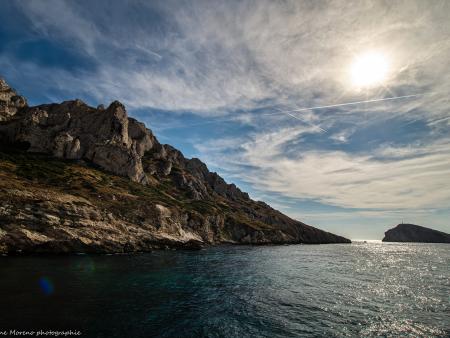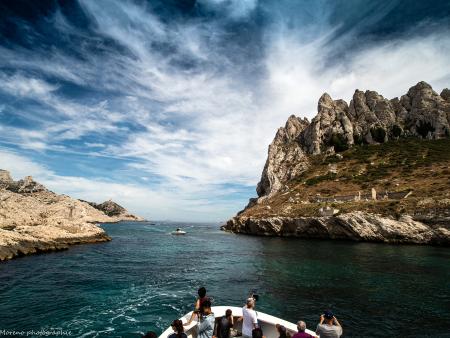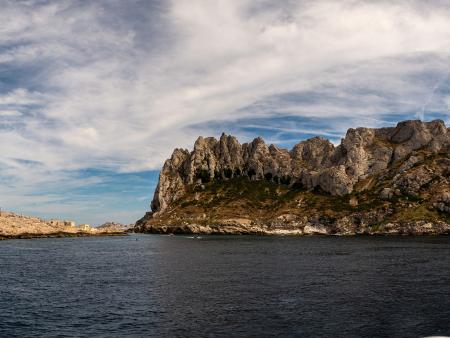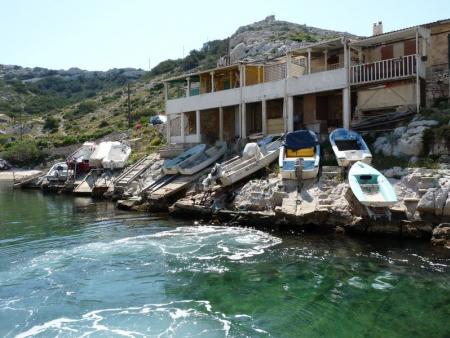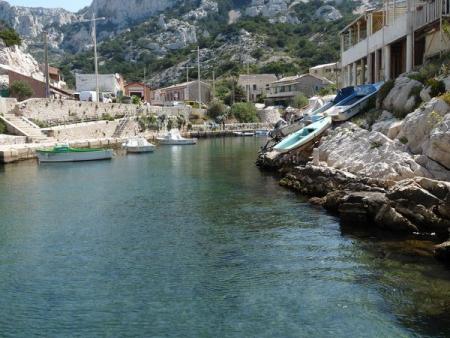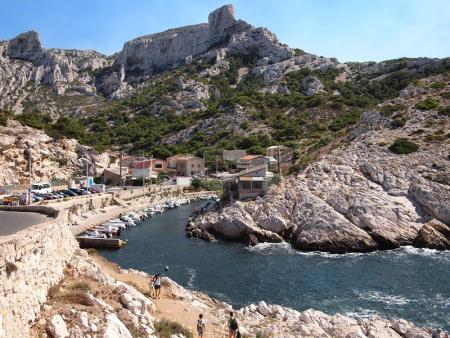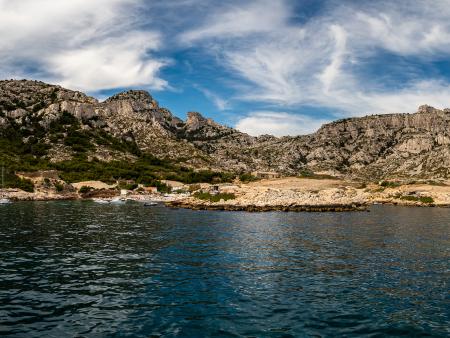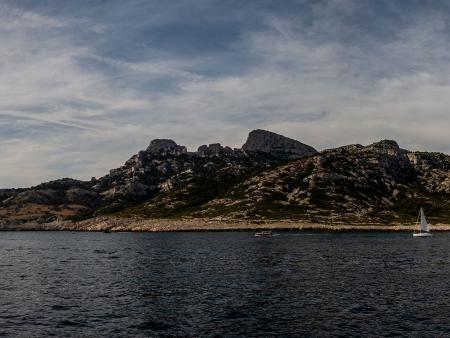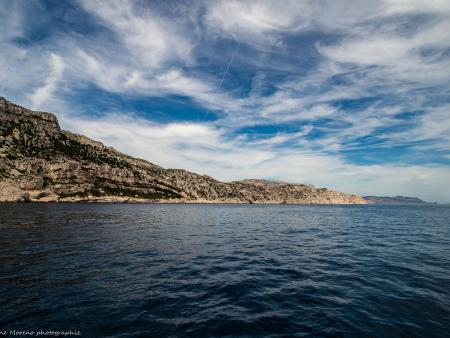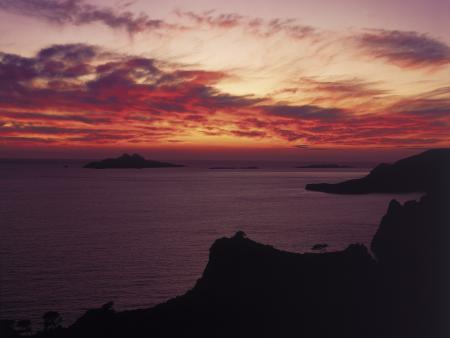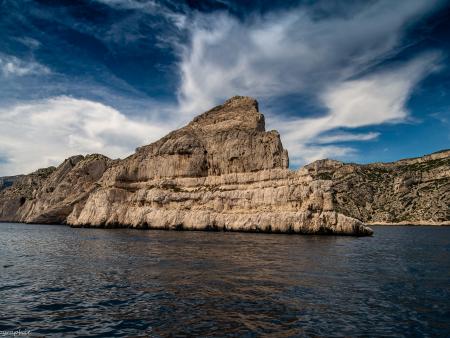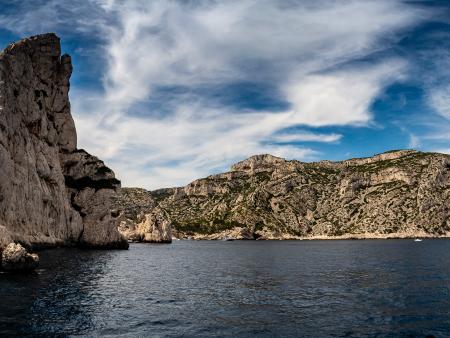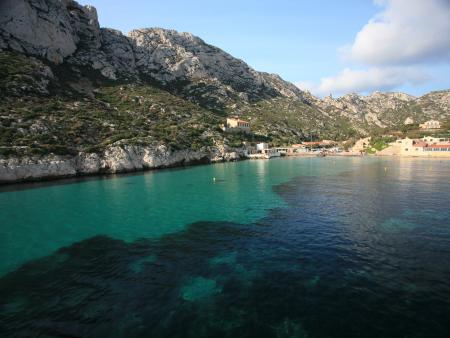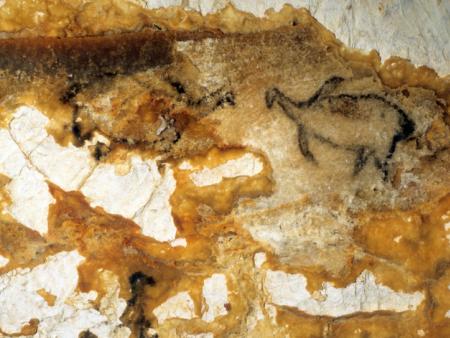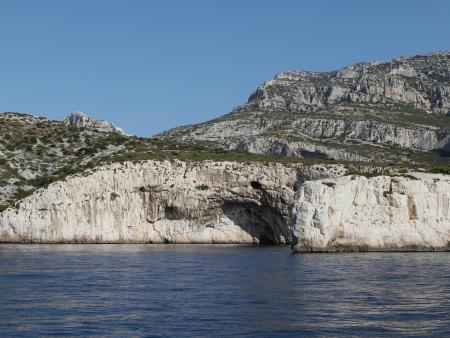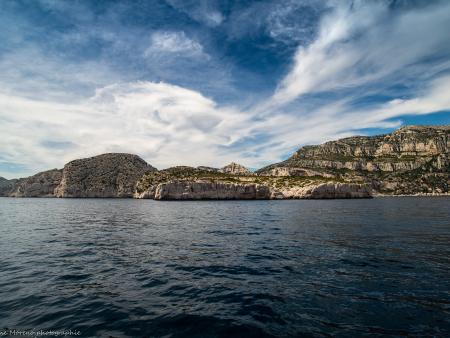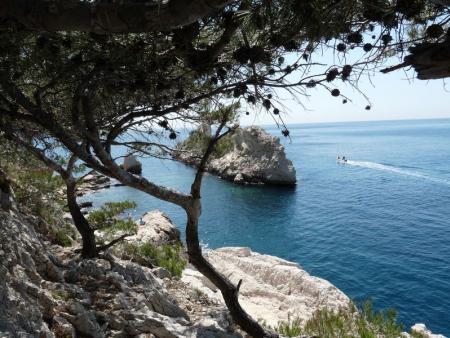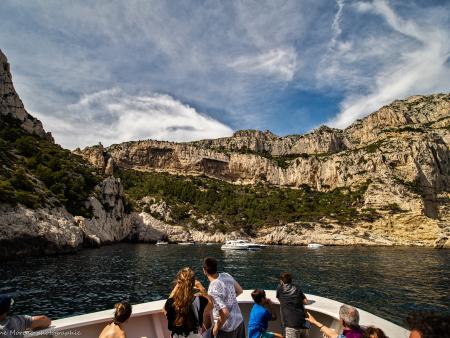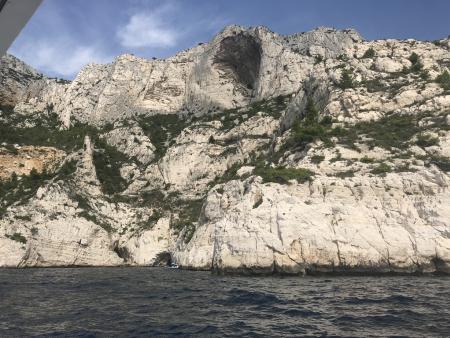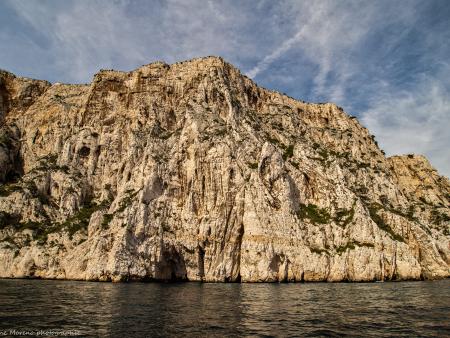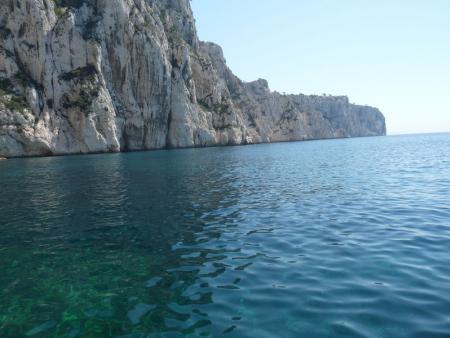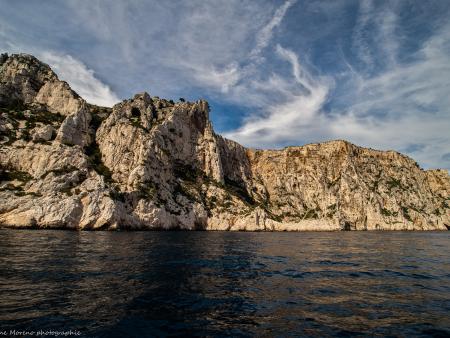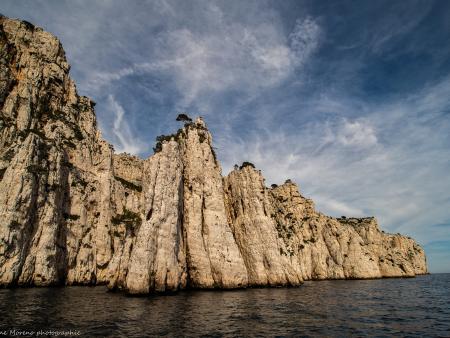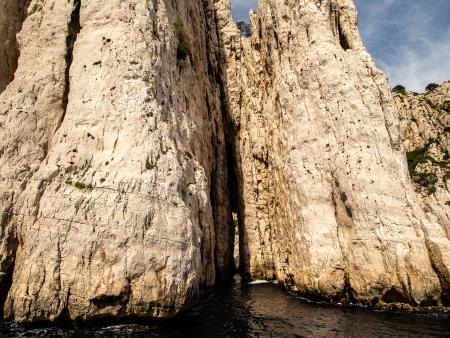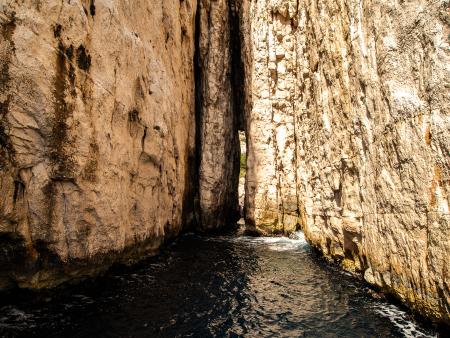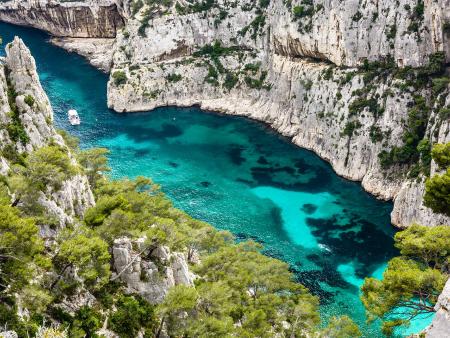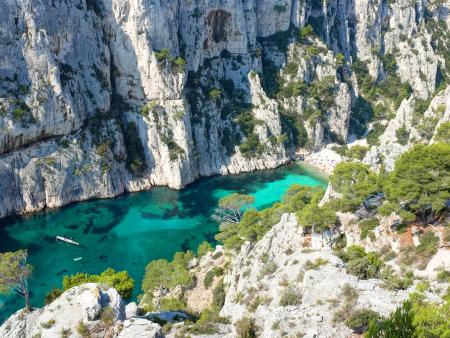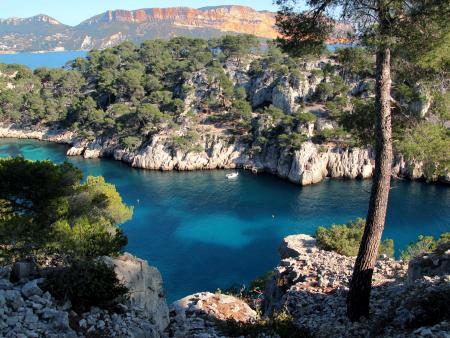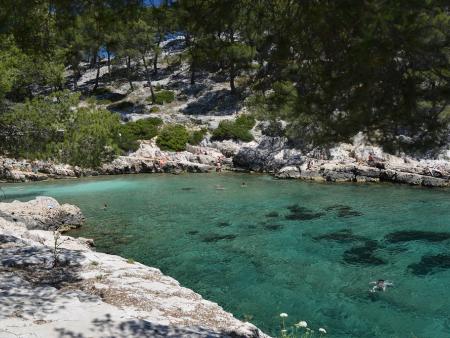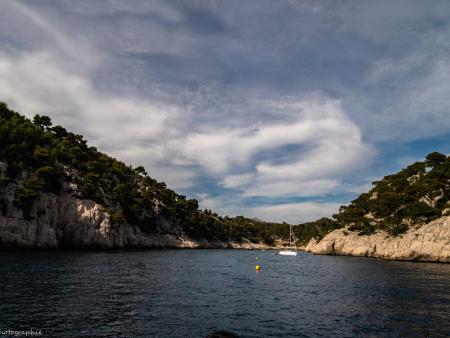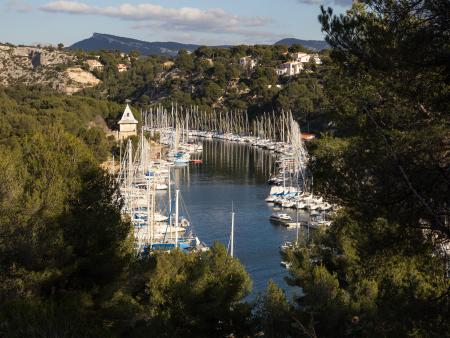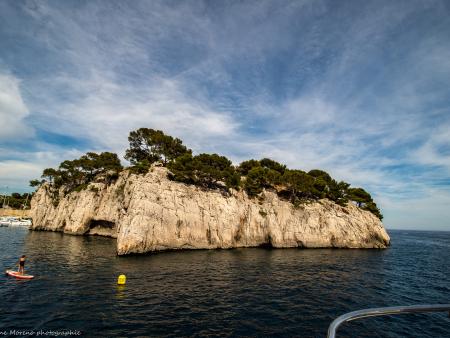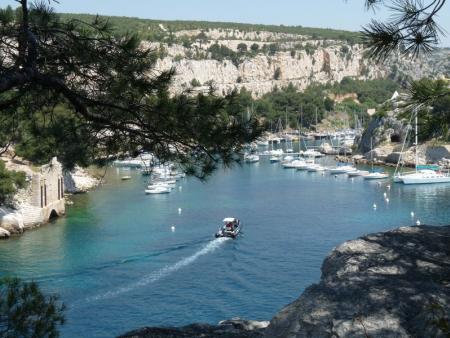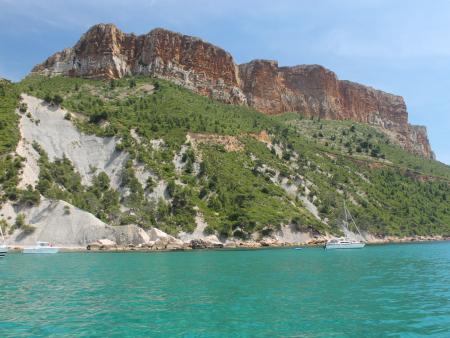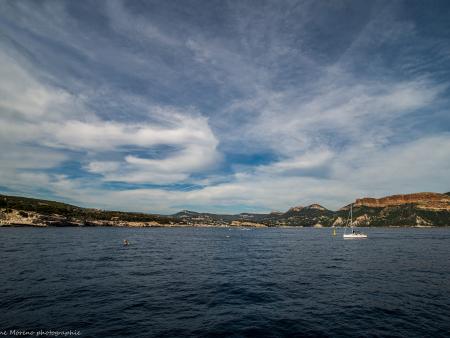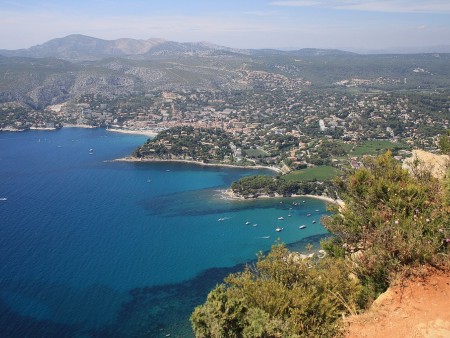Famous for rock climbing, Sormiou is the widest Calanque in Marseille, 800m long and 600m wide. Its main feature being the numerous small houses where fishermen settled down from 1894 and established a small fishing port. Houses have neither running water, nor electricity. The access by road is well hidden, as if the inhabitants had wanted to protect this little piece of paradise. Discover this place by the sea and enjoy a wonderful visit!
Sormiou, splendid calanque in south of Marseille
Many movies have been shot in this calanque. Why ? It is a place that offers exceptional natural landscapes ! Turquoise blue sea and sand beach create an unbelievable decor. For example, "The French" movie starring Jean Dujardin ("The Artist") and Gilles Lellouche was shot in this beautiful calanque.
This creek, which is the widest of the Marseille creeks, has splendid turquoise waters, a sandy beach and some small beaches with pebbles. An idyllic setting accessible by boat.
In addition, Sormiou is a place known for its seabed which makes it an exceptional dive site.
See our cruises
Discover a large creek by the sea
Considered one of the most appreciated creeks of Marseille, Sormiou stands out from the other creeks by its size.
Its area extends over 800m long and 600m wide.
If it can be visited by land trails, to miss nothing of the beauty and treasures of Sormiou, nothing like a boat cruise! Enjoy an incredible view of Cape Sormiou, its unspoilt vegetation and its typical Provencal port.
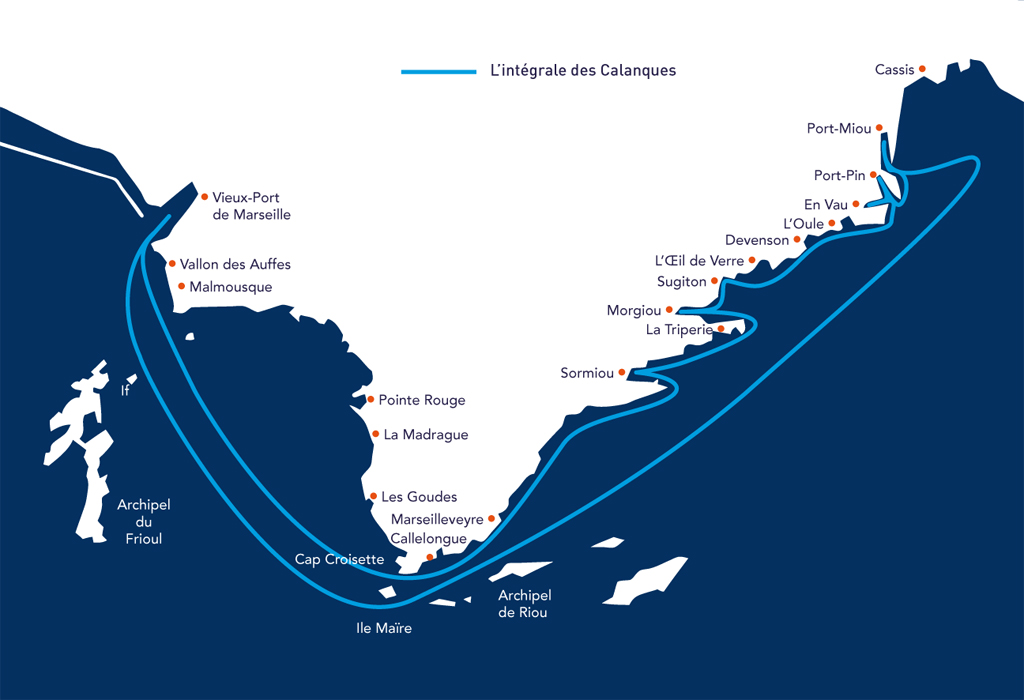




 04.91.58.50.58
04.91.58.50.58